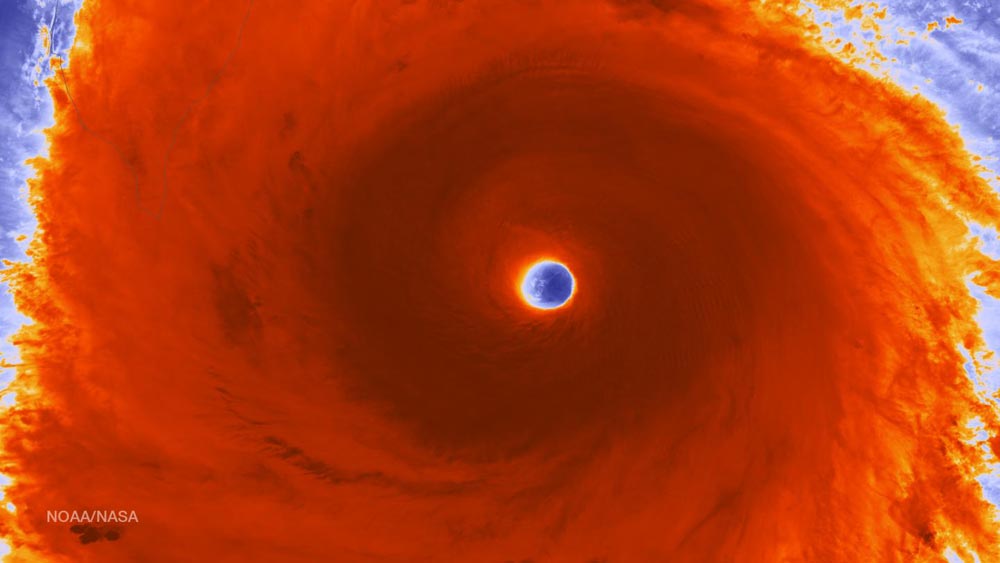

The VIIRS instrument aboard NASA-NOAA-DOD's Suomi NPP satellite captured a close-up image of the storm's eye surrounded by powerful thunderstorms.
Credit: NOAA/NASA/DOD
The RapidScat instrument that flies aboard the International Space Station has been analyzing the winds around Super typhoon Nepartak. RapidScat is a scatterometer that can measure wind speeds over open ocean surfaces. RapidScat passed directly over Super Typhoon Nepartak on July 6 and read wind speeds upwards of 27 meters per second (60.4 mph/97.2 kph).
Tropical Storm force winds of 34 knots (39 mph/63 kph) or higher were occurring within 135 to 145 miles of the center, while typhoon-force winds of 64 knots (74 mph/119 kph) or higher occur within 45 to 60 miles of the center.
On July 7 at 02:30 UTC (July 6 at 10:30 p.m. EDT) the MODIS instrument aboard NASA's Terra satellite captured a visible light image of Super Typhoon Nepartak approaching Taiwan. The image showed a clear eye and bands of thunderstorms wrapping into the low-level center.
On July 7, 2016, at 12:45 a.m. EDT, the Visible Infrared Imaging Radiometer Suite (VIIRS) instrument aboard NASA-NOAA-DOD's Suomi NPP satellite captured a close-up image of the storm's eye surrounded by powerful thunderstorms.
The Joint Typhoon Warning Center (JTWC) said that Nepartak appears to have weakened slightly during the early morning of July 7 (EDT) with cooling eye temperatures evident in infrared satellite data.
The Philippines issued some warnings for July 7: Public storm warning signal #2 is raised in Batanes group of islands and Public storm warning signal #1 is raised in Babuyan group of Islands. In the Philippines Nepartak is referred to as Butchoy.
At 1500 UTC (11 a.m. EDT) on July 7, Nepartak was still a super typhoon. Maximum sustained winds were near 140 knots (161.1 mph/259.3 kph). It was located near 22.0 degrees north latitude and 122.6 degrees east longitude, about 196 nautical miles south-southeast of Taipei, Taiwan. Nepartak was moving to the west-northwest at 8 knots (9.2 mph/14.8 kph).
Taiwan's Central Weather Bureau posted Typhoon Warnings on July 7. For details and graphics visit: http://www.
Nepartak is expected to cross southern Taiwan from southeast to northwest. Landfall is expected around July 8 around 0000 UTC (July 7 at 8 p.m. EDT). Nepartak has started on a weakening trend as it approaches Taiwan. The Joint Typhoon Warning Center expects the storm to move through the Taiwan Straits and make landfall in eastern China around July 9 around 0000 UTC (8 p.m. EDT) where it will dissipate.












